Windows 11 offers the ability to create and manage multiple virtual desktops, enhancing your ability to organize open applications and tasks efficiently. This feature allows you to separate different activities into distinct desktops, making multitasking smoother and your workspace less cluttered.
Benefits of using multiple virtual desktops
Using multiple virtual desktops can significantly enhance your productivity by allowing you to organize your workspace more effectively. Here are some key advantages:
Improved organization and focus. By categorizing your open applications and windows across different desktops, you can keep work-related tasks separate from personal activities. This separation reduces visual clutter and helps you focus on the task at hand.
Simplified window management. Virtual desktops enable you to manage your open windows more efficiently. You can easily move applications between desktops with simple drag-and-drop actions or keyboard shortcuts, streamlining your workflow.
Personalized workspaces. With Windows 11, you can customize each virtual desktop with its own background, allowing you to personalize your environment and quickly distinguish between different desktops.
Trying out multiple virtual desktops can help you determine whether this feature enhances your workflow and productivity.
Creating multiple virtual desktops in Windows 11
Step 1: To create a new virtual desktop, press Windows + Tab to open Task View. At the top, you'll see all the open windows on your current desktop, and at the bottom, you'll see thumbnails of your existing virtual desktops.
Step 2: Click on the New desktop option (a plus sign) to add a new virtual desktop. This new desktop will appear alongside your existing ones in Task View.
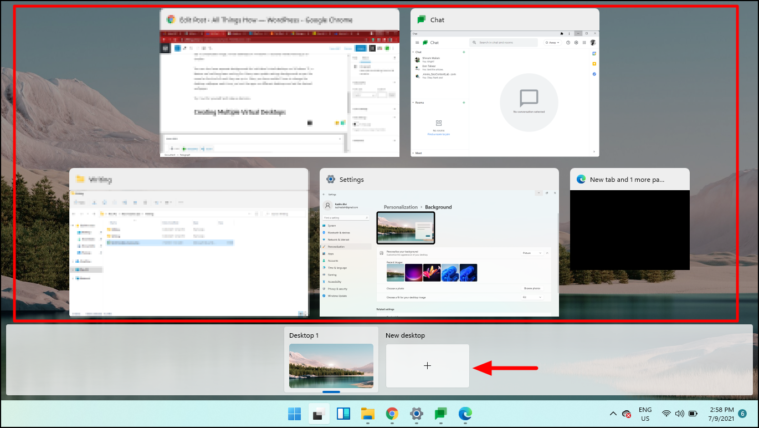
If you prefer, you can also click or hover over the Task View button on the Taskbar to access your virtual desktops. If the Task View button is not visible, you may need to enable it in the Taskbar settings.
Enabling the Task View button
If the Task View button is not visible on your Taskbar, you can enable it through the Taskbar settings.
Step 1: Right-click on an empty area of the Taskbar and select Taskbar settings.

Step 2: In the settings window, locate the Task view option and toggle it to On to display the button on the Taskbar.
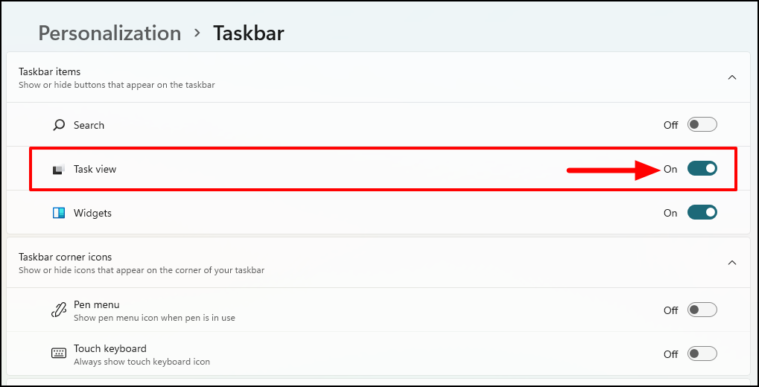
Switching between virtual desktops
Method 1: Using keyboard shortcuts
You can quickly switch between virtual desktops using keyboard shortcuts. Press Windows + Ctrl + → to move to the virtual desktop on the right, or Windows + Ctrl + ← to move to the one on the left.
This method is efficient for navigating between desktops without interrupting your workflow.
Method 2: Using Task View
Step 1: Click on the Task View button on the Taskbar, or press Windows + Tab to open Task View.
Step 2: At the bottom of the Task View screen, select the virtual desktop you want to switch to.

Renaming a virtual desktop
To help keep your desktops organized, you can rename them based on their purpose.
Step 1: Hover over the Task View button on the Taskbar to view your virtual desktops.
Step 2: Click on the name of the desktop (e.g., Desktop 1) to edit it, type the new name, and press Enter to save.
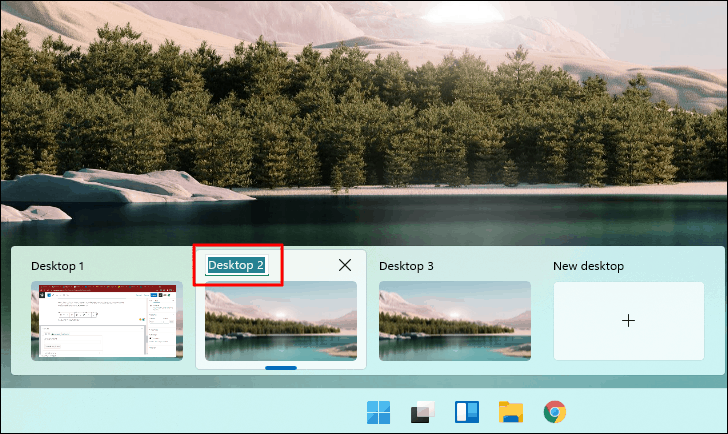
You can also right-click on the desktop thumbnail in Task View and select Rename from the context menu to change the name.

Rearranging virtual desktops
You can change the order of your virtual desktops to suit your preferences.
Using keyboard shortcuts
Step 1: Press Windows + Tab to open Task View.
Step 2: Press the Tab key until a black outline appears around the virtual desktops at the bottom.
Step 3: Use the arrow keys to select the desktop you want to move.
Step 4: Press Alt + Shift + ← or Alt + Shift + → to move the selected desktop left or right, respectively.
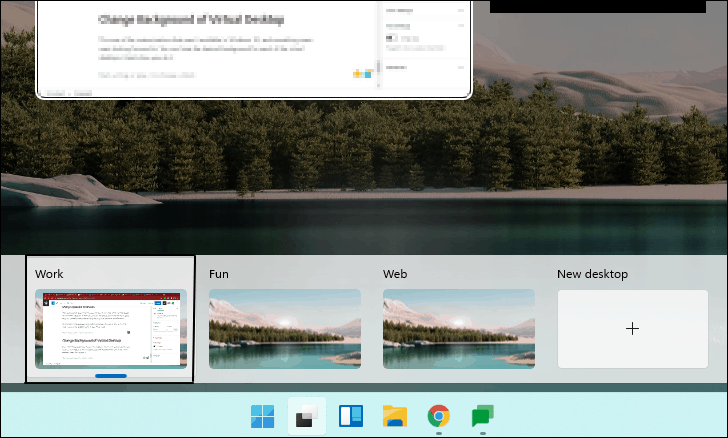
The virtual desktop will move to the new position accordingly.
By dragging and dropping
Step 1: Open Task View by clicking the Task View button or pressing Windows + Tab.
Step 2: Click and hold the virtual desktop you want to move.
Step 3: Drag it to the desired position and release the mouse button.
Customizing virtual desktop backgrounds
Windows 11 allows you to set different backgrounds for each virtual desktop, making it easier to distinguish between them.
Step 1: Open Task View by clicking the Task View button or pressing Windows + Tab.
Step 2: Right-click on the virtual desktop you wish to customize and select Choose background from the context menu.
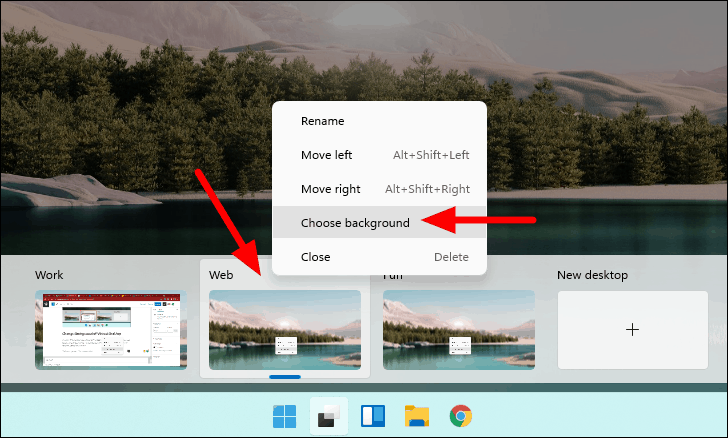
Step 3: In the Settings window that opens, select a new background or theme. The change will apply only to the selected virtual desktop.
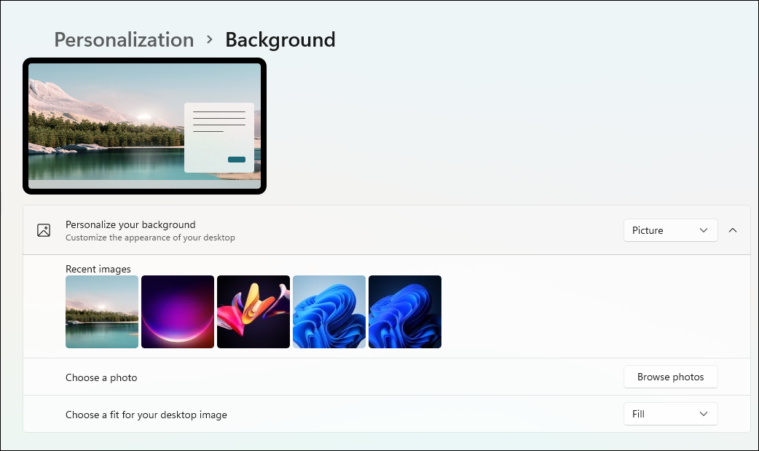
Here is an example of different desktops with unique backgrounds:
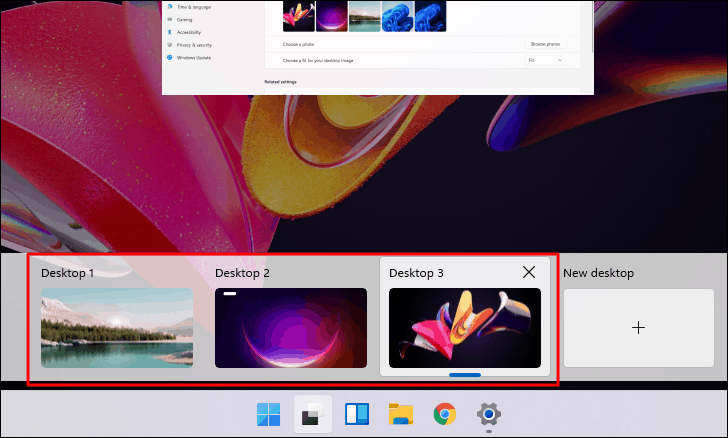
Troubleshooting background changes
If you encounter issues when changing the background of a virtual desktop, it might be because the Settings app is already open on another desktop. Windows 11 only allows one instance of the Settings app at a time, and if it's open elsewhere, attempting to change settings may redirect you to that desktop without notice.
To resolve this:
Step 1: Check all your virtual desktops to ensure the Settings app is closed on each one.
Step 2: Once the Settings app is closed on all desktops, retry changing the background of your desired virtual desktop.
Adjusting virtual desktop settings
You can customize how windows and apps appear across your virtual desktops.
Step 1: Open the Settings app by clicking the Start button and selecting Settings (or pressing Windows + I).
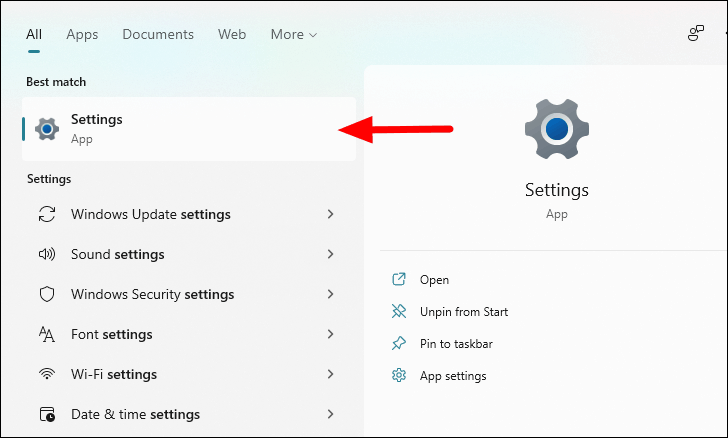
Step 2: In the sidebar, select System, then scroll down and click on Multitasking.
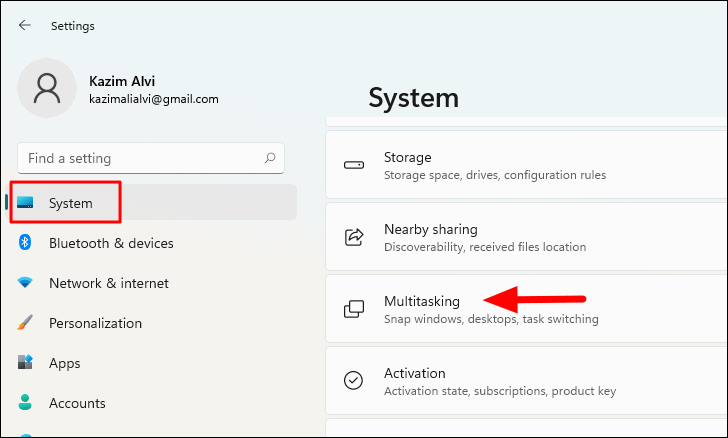
Step 3: Under the Desktops section, adjust the settings according to your preferences. You can choose whether to show windows open on all desktops or only the current one in the Taskbar and Alt+Tab view.
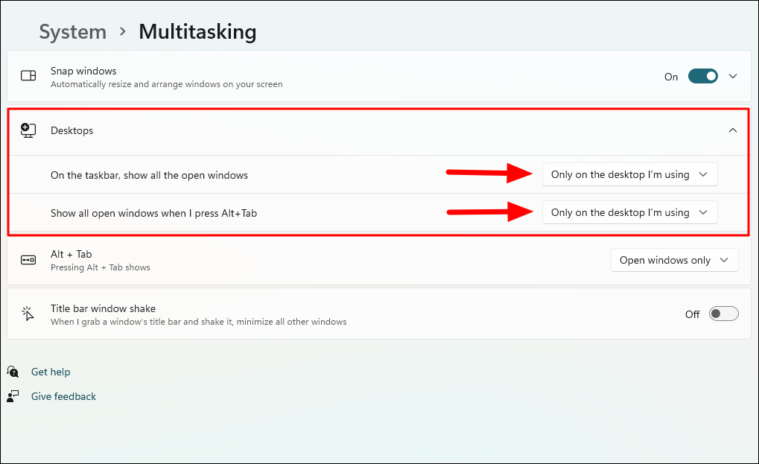
Selecting On all desktops will display all open windows across your desktops, while Only on the desktop I'm using will limit the view to the current desktop.
Moving applications between virtual desktops
You can move open applications from one virtual desktop to another to better organize your tasks.
Step 1: Open Task View by clicking the Task View button or pressing Windows + Tab.
Step 2: In the upper section, you'll see the windows open on the current desktop.
Step 3: Click and hold the application you want to move.
Step 4: Drag the application down to the thumbnail of the virtual desktop you wish to move it to, and release the mouse button.
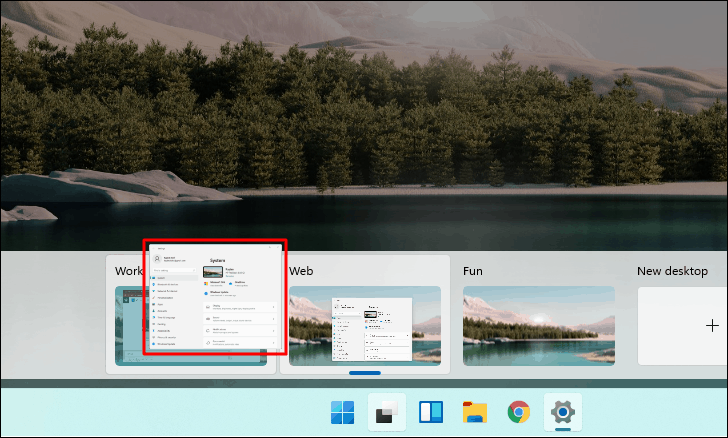
The application will now be accessible on the selected virtual desktop.
By utilizing multiple virtual desktops and customizing them to your needs, you can improve your workflow and productivity in Windows 11. Experiment with these features to find the setup that works best for you.









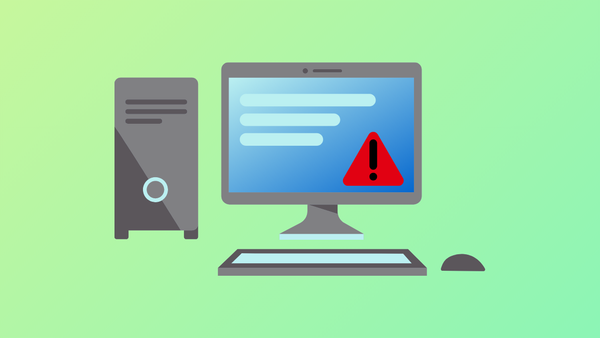
Member discussion